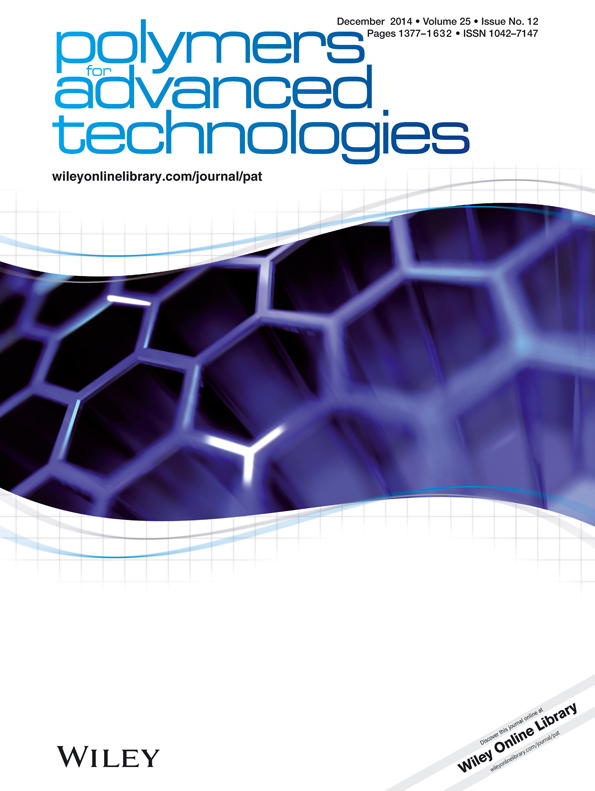Use of maleic anhydride compatibilization to improve toughness and other properties of polylactide blended with thermoplastic elastomers
Abstract
Polylactide (PLA) being a very brittle biopolymer could be toughened by blending with thermoplastic elastomers such as thermoplastic polyurethane elastomer (TPU) and thermoplastic polyester elastomer (TPE); unfortunately, these blends are immiscible forming round domains in the PLA matrix. Therefore, the purpose of this study was to investigate the effects of using maleic anhydride (MA) compatibilization on the toughness and other properties of PLA blended with TPU and TPE. MA grafting on the PLA backbone (PLA-g-MA) was prepared separately by reactive extrusion and added during melt blending of PLA/thermoplastic elastomers. IR spectroscopy revealed that MA graft might interact with the functional groups present in the hard segments of TPU and TPE domains via primary chemical reactions, so that higher level of compatibilization could be obtained. SEM studies indicated that PLA-g-MA compatibilization also decreased the size of elastomeric domains leading to higher level of surface area for more interfacial interactions. Toughness tests revealed that Charpy impact toughness and fracture toughness (KIC and GIC) of inherently brittle PLA increased enormously when the blends were compatibilized with PLA-g-MA. For instance, GIC fracture toughness of PLA increased as much as 166%. It was also observed that PLA-g-MA compatibilization resulted in no detrimental effects on the other mechanical and thermal properties of PLA blends. Copyright © 2014 John Wiley & Sons, Ltd.




